The leading Baroque painter of the Spanish Golden Age was a man named Diego Velázquez (1599-1660). Famous for his portraits of the Spanish royal family as the court painter of King Philip IV, his style continuously evolved as his work matured.
This resulted in a wide variety of paintings that have incredible cultural and historical importance. Some of his works became the inspiration for the most famous Realist painters and Impressionist artists of the 1800s, about 2 centuries later.
Many of Velázquez’s paintings were lost when the Royal Alcazar of Madrid burned down on Christmas Eve of the year 1734, but luckily, his magnum opus was saved from the flames with little damage to it.
It’s assumed that he created between 110 and 120 artworks, and in this post, we’ll take a closer look at some of the most famous Diego Velázquez Paintings, masterpieces of a very special and intriguing Spanish painter.
1. Las Meninas
- Date Created: 1656
- Dimensions: 318 × 276 centimeters (125.2 × 108.7 inches)
- Location: Museo del Prado, Madrid, Spain
Las Meninas is considered to be the ultimate masterpiece of the Spanish artist. The title of the work literally translates to “The Ladies-in-waiting” and depicts several members of the Spanish court in what is believed to be the main chamber of the Royal Alcazar of Madrid.
The work is fascinating because it really intertwines illusion and reality and has therefore been described as one of the most important paintings in Western art history. Apart from the Infanta Margaret Theresa, we also see the painter himself, maids of honor, a chaperone, a bodyguard, two dwarfs, and a dog. The king and queen are seen in a mirror in the background as well.

2. Old Woman Frying Eggs
- Date Created: 1618
- Dimensions: 100.5 × 119.5 centimeters (39.6 × 47.0 inches
- Location: Scottish National Gallery, Edinburgh, Scotland
Old Woman Frying Eggs or “Vieja friendo huevos” in Spanish is one of the earliest works of the painter, dating back to his Seville period, which was his hometown. The exact date is unknown but is believed to be around 1618 before he permanently moved to Madrid in 1623.
This remarkable work emphasizes the mastery of chiaroscuro by Velázquez, the strong contrast between dark and light. This also allowed the painter to depict the items as if they are really there, a remarkable example of realism in the early 17th century.

3. The Waterseller of Seville
- Date Created: 1618-1622
- Dimensions: 105 × 80 centimeters (41 × 31 inches)
- Location: Apsley House, London, United Kingdom
The Waterseller of Seville is another work of which the exact date is unclear and which dates back to the painter’s period in Seville. It depicts a water seller, a common profession in this city for the lower classes. It’s one of 3 paintings of the same subject painted by Velázquez in Seville in his late teens and early twenties.

We see the old man selling a glass of water to a young boy while a bystander looks at the transaction in the background. Because of the items displayed, it’s assumed that the scene takes place within one of the city’s many taverns.
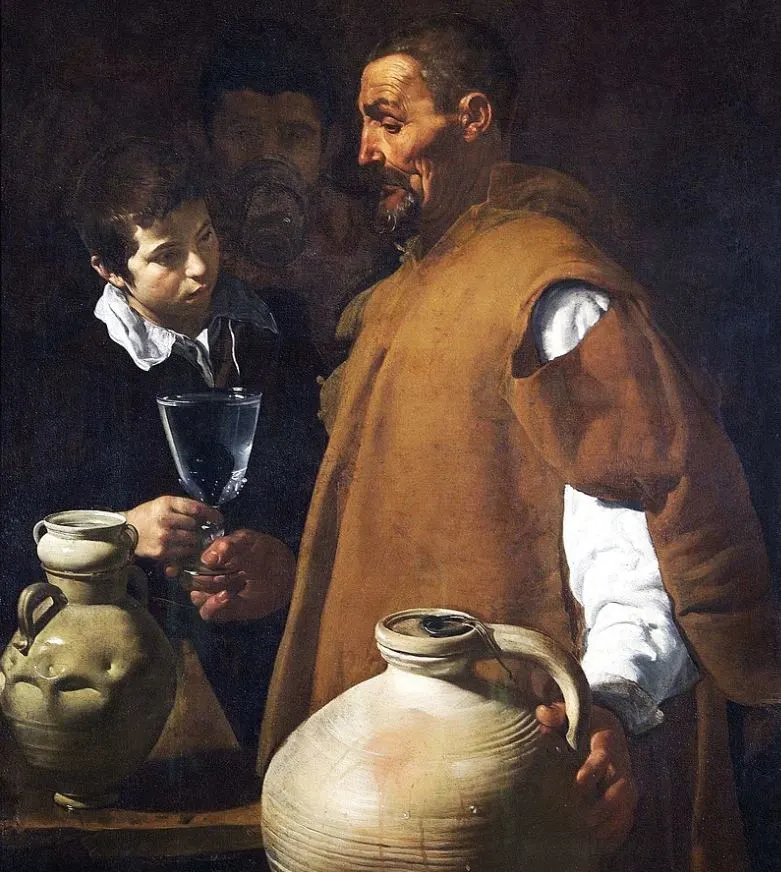
4. Portrait of Francisco Pacheco
- Date Created: 1622
- Dimensions: 41 x 36 centimeters (16.14 x 14.17 inches)
- Location: Museo del Prado, Madrid, Spain
The Portrait of Francisco Pacheco is one of the numerous portraits painted by Velázquez, but unlike the paintings of members of the royal family, this painting depicts somebody much closer to him.
Francisco Pacheco was the father-in-law of the painter after his daughter Juana married Diego on April 23, 1618. Remarkably, Pacheco was a successful painter himself as well who was mainly influenced by the works of El Greco after he visited Toledo.
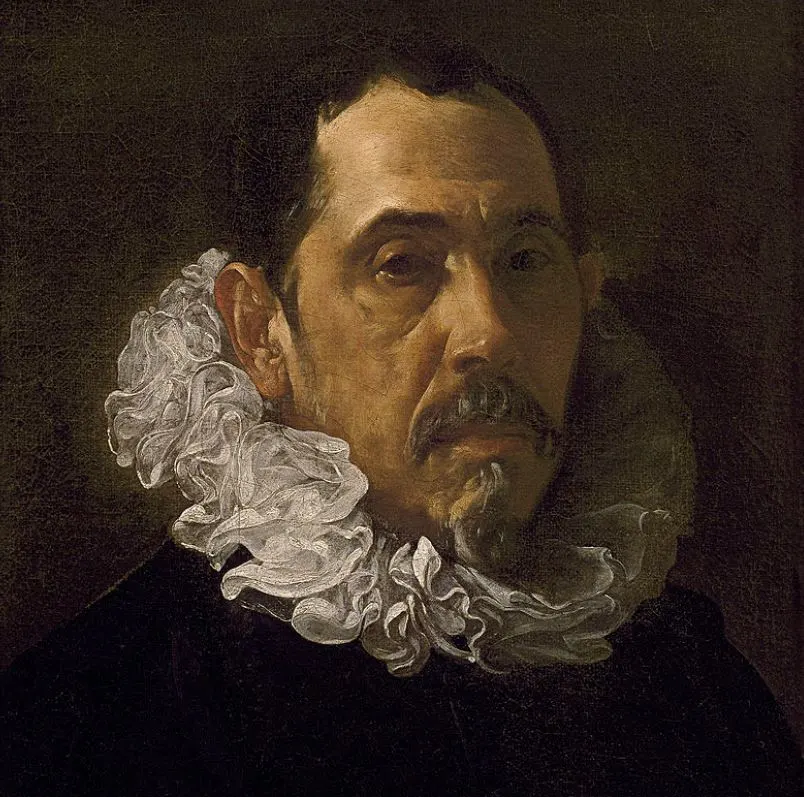
5. Philip IV in Brown and Silver
- Date Created: 1635
- Dimensions: 199 × 113 centimeters (78 × 44 inches)
- Location: National Gallery, London, United Kingdom
Philip IV in Brown and Silver is one of the presumably 34 Diego Velázquez paintings depicting King Philip IV of Spain (1605-1665). Even the earliest of these portraits has been lost, this one was considered to be the model for all other portraits of the king in the 1630s.
This particular painting was presumably created in the year 1635 even though a clear date is unknown. It was, however, painted after his first trip to Italy, something that reflects in the softer use of colors. This probably shows the influence of the painters of the Venetian School.
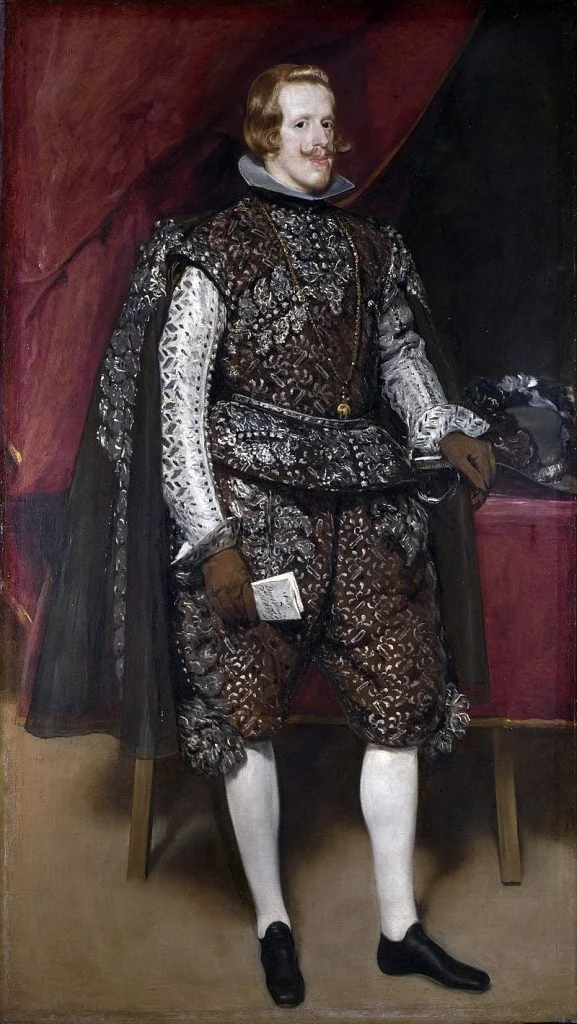
6. The Triumph of Bacchus
- Date Created: 1628-1629
- Dimensions: 165 × 225 centimeters (65 × 89 inches)
- Location: Museo del Prado, Madrid, Spain
The Triumph of Bacchus is often referred to as “Los Borrachos” or “The Drunks.” This particular work was painted just before he departed to Italy for the first time in the late 1620s and is considered to be his masterpiece of this decade.
It depicts the god of grape-harvest Bacchus as he is surrounded by drunkards who enjoy his grape juice. The subject to his left appears to be joining him from the mythical world, while the other men are dressed in 17th-century poor man’s clothes.
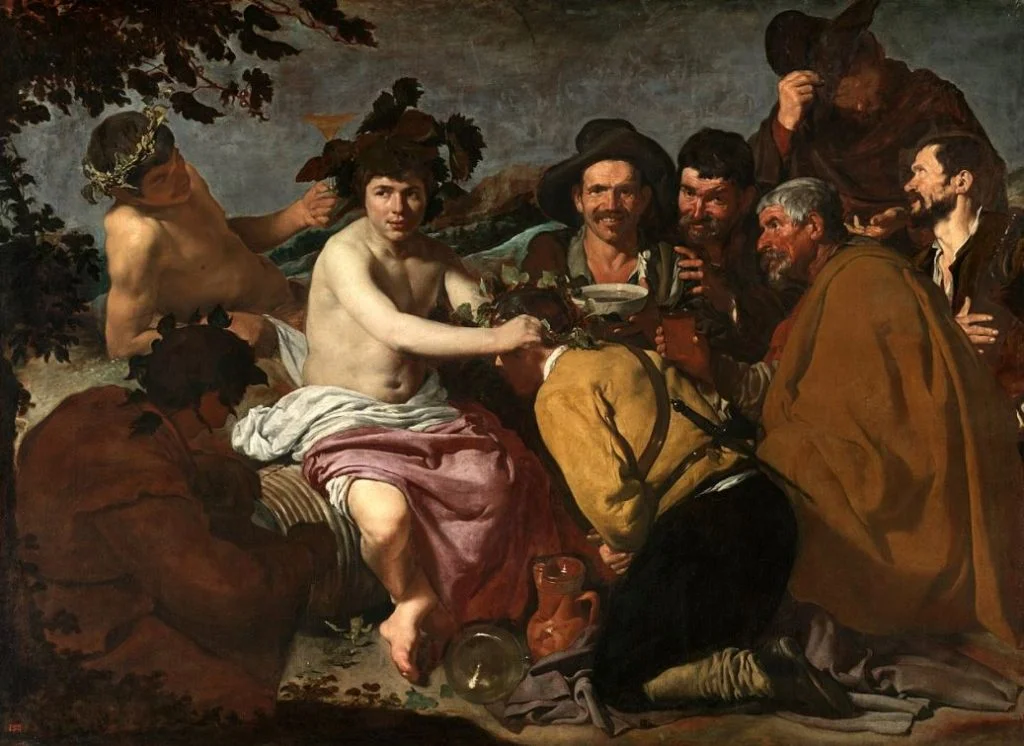
7. The Surrender of Breda
- Date Created: 1634-1635
- Dimensions: 307 × 367 centimeters (121 × 144 inches)
- Location: Museo del Prado, Madrid, Spain
The Surrender of Breda or “La Rendición de Breda” depicts an important moment during the Eighty Years War (1568-1548), the military victory of the Spanish during the 1624 Siege of Breda.
We can see the moment that the key of Breda is changed from Dutch possession to Spanish. On the right, we can see the Spanish Genoese general Ambrogio Spinola (1569-1630) who receives the key of Breda from Dutch leader Justinus van Nassau (1559-1631).

8. Rokeby Venus
- Date Created: 1647-1651
- Dimensions: 122 × 177 centimeters (48 × 49.7 inches)
- Location: National Gallery, London, United Kingdom
The Rokeby Venus, also known as “The Toilet of Venus” or “Venus at her Mirror,” is one of the most intriguing Diego Velázquez paintings. The main reason is that it’s the only surviving painting in his oeuvre which depicts a naked female.
The reason for this was fairly simple as the members of the Spanish Inquisition weren’t too fond of this particular type of painting. Because he was the court painter he could get away with it. It’s assumed that he got the inspiration for this painting from either Giorgione’s Sleeping Venus (1510) and Titian’s painting the Venus of Urbino (1538).
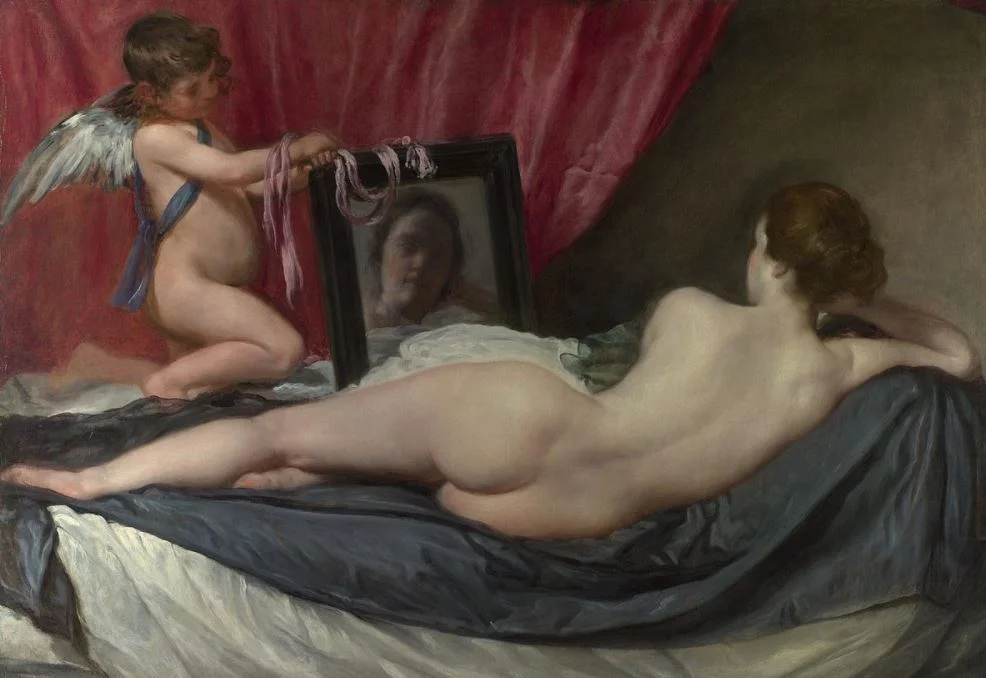
9. Equestrian Portrait of Prince Balthasar Charles
- Date Created: 1635
- Dimensions: 209 × 173 centimeters (82 × 68 inches)
- Location: Museo del Prado, Madrid, Spain
The Equestrian Portrait of Prince Balthasar Charles is one of the many portraits of members of the royal family of Spain. This particular one portrays Balthasar Charles, Prince of Asturias (1629-1646) as he’s riding a horse.
The prince was the only son of King Philip IV and his first wife Elisabeth of France and was the main figure in multiple of Velázquez’s most famous paintings.
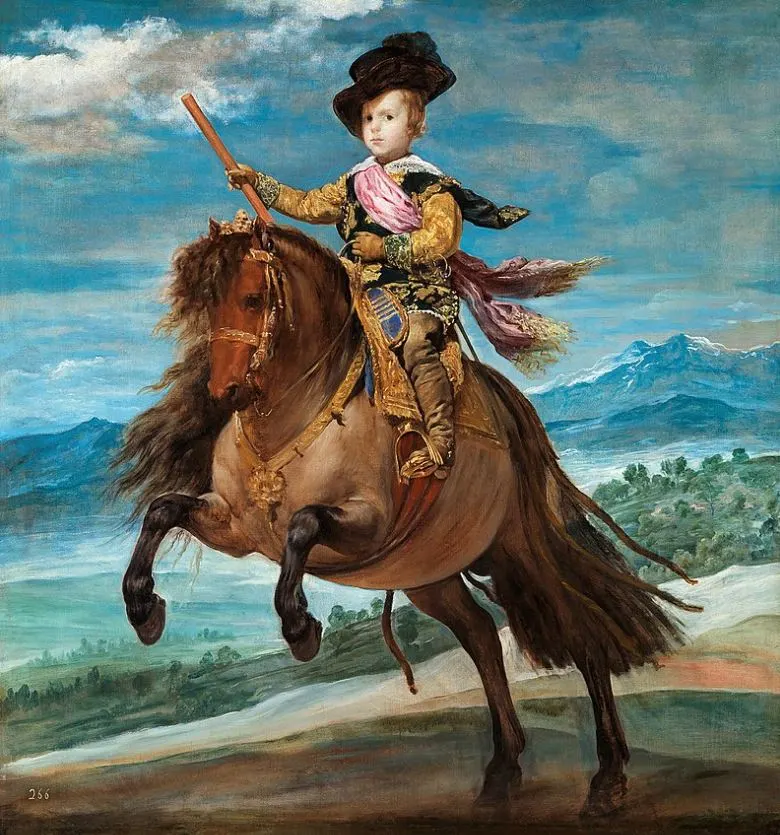
10. Portrait of Juan de Pareja
- Date Created: 1650
- Dimensions: 81.3 × 69.9 centimeters (32.0 × 27.5 inches)
- Location: Metropolitan Museum of Art, New York City, United States
The Portrait of Juan de Pareja is another remarkable painting with a remarkable story, mainly because of the depicted subject. Pareja was the assistant of Velázquez who was born into slavery in the south of Spain.
He joined Velázquez on his second trip to Italy and this particular portrait was painted in Rome during this trip in the year 1650. This was also the year that Diego decided to free his assistant, who ended up becoming a notable painter and a remarkable oeuvre of paintings himself.
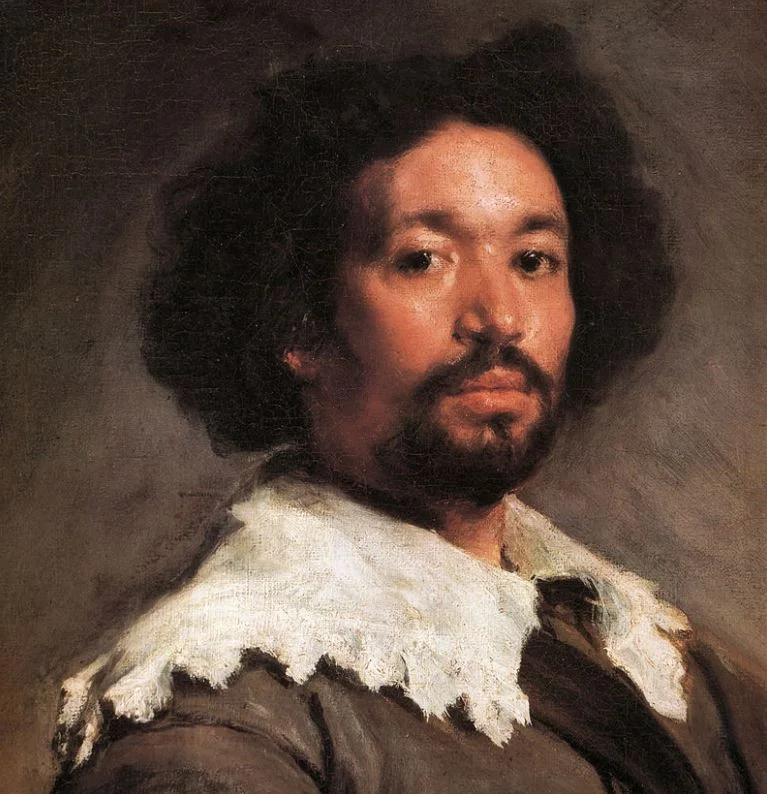
11. Portrait of Pope Innocent X
- Date Created: 1650
- Dimensions: 141 × 119 centimeters (56 × 47 inches)
- Location: Galleria Doria Pamphilj, Rome, Italy
The Portrait of Pope Innocent X is another portrait painted by Velázquez in the same year that he depicted his assistant Pareja. It’s considered to be one of the finest portraits ever created, mainly because of the exceptional realism it depicts.
The Pope really wasn’t too sure whether or not he wanted his portrait painted, which is something masterly reflected in the way he looks. The Pope was born Giovanni Battista Pamphilj (1574-1655) and this particular portrait is still housed in the art gallery owned by the Pamphilj family today.

12. Coronation of the Virgin
- Date Created: 1641-1644
- Dimensions: 176 × 124 centimeters (69 × 49 inches)
- Location: Museo del Prado, Madrid, Spain
The Coronation of the Virgin depicts a popular religious theme, namely the crowning of the Blessed Virgin Mary by the Holy Trinity. It’s a remarkable painting in the sense that Velázquez didn’t paint that many paintings with a religious subject.
It’s assumed that it was commissioned for the oratory of the court of Queen Elisabeth of France. Another remarkable fact is that it’s most probably that the model of the Virgin Mary in this painting was the same as the women portraying Venus in the Rokeby Venus painting.

13. Las Hilanderas
- Date Created: 1655
- Dimensions: 220 × 289 centimeters (87 × 114 inches)
- Location: Museo del Prado, Madrid, Spain
Las Hilanderas literally translates to “The Spinners” and is also sometimes referred to as “The Fable of Arachne.” The true subject of the painting was long unknown as it was assumed that it depicted women working at the tapestry workshop of Santa Isabel.
The correct interpretation of the painting wasn’t discovered until the year 1948 when an art historian pointed out that it depicts “Ovid’s Fable of Arachne.” This fable revolves around the mortal Arachne inviting the goddess to a weaving competition, and after losing, she turns the woman into a spider. This story is derived from Greek Mythology and is now accepted as the true meaning of the painting.
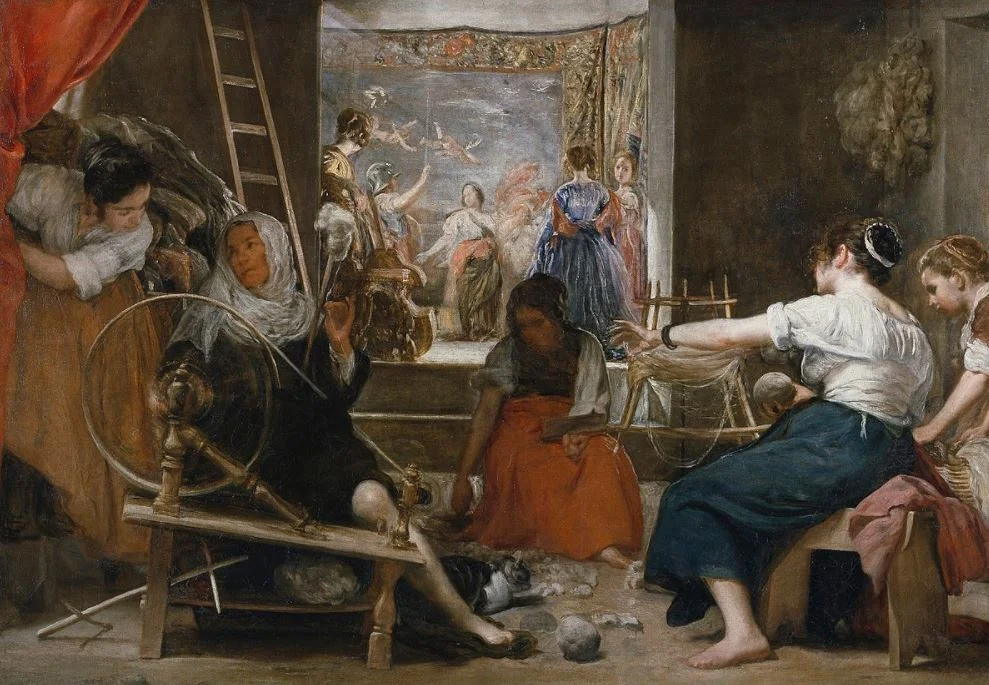
14. Apollo in the Forge of Vulcan
- Date Created: 1630
- Dimensions: 223 × 290 centimeters (87 × 114 inches)
- Location: Museo del Prado, Madrid, Spain
Apollo in the Forge of Vulcan is also sometimes referred to as “Vulcan’s Forge” is a painting completed in the early 1630s, shortly after the painter came back from his first trip to Italy.
This painting is considered to be the ultimate masterpiece during his first trip to Italy and has been praised because of the natural interaction between the subjects. It’s assumed that it was painted at the request of Peter Paul Rubens, even though it became part of the royal collection shortly after it was completed.
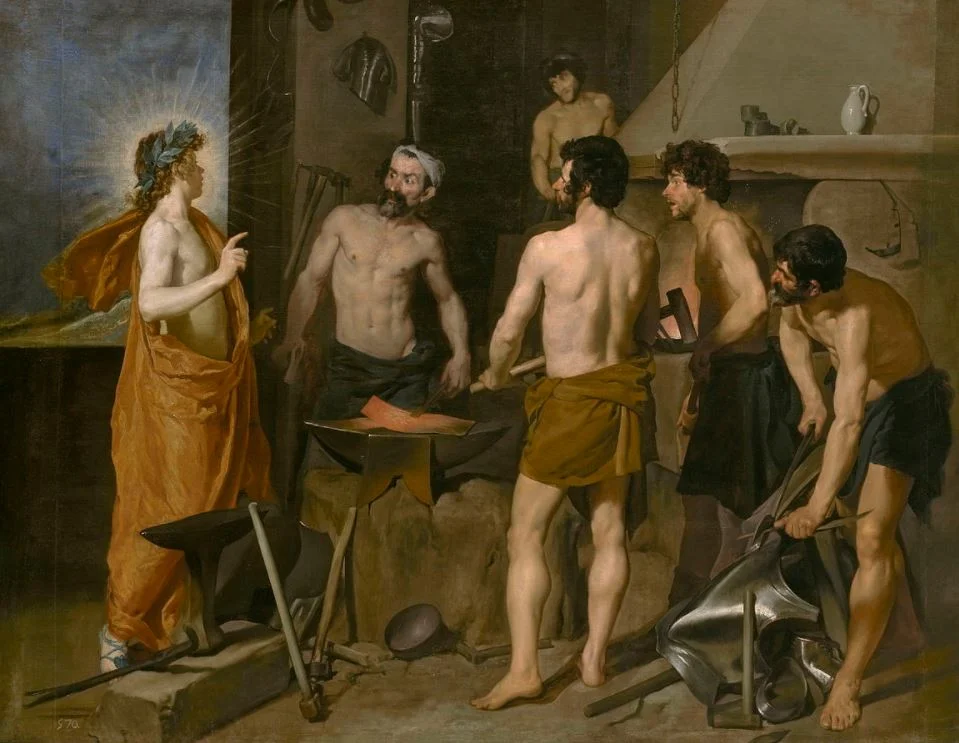
15. Infanta Margarita Teresa in a Blue Dress
- Date Created: 1659
- Dimensions: 127 × 107 centimeters (50 × 42 inches)
- Location: Kunsthistorisches Museum, Vienna, Austria
Infanta Margarita Teresa in a Blue Dress is arguably one of the best-known portraits ever created by Velázquez. It depicts the same girl as in his ultimate masterpiece Las Meninas, Margaret Theresa of Spain (1651-1673), and was one of the final paintings created by the artist.
This painting clearly displays how the artist’s style evolved over the decades as it was created with loose brushstrokes which come together nicely when viewed from a distance. This makes it another masterpiece of one of the most famous artists of the Baroque period!

